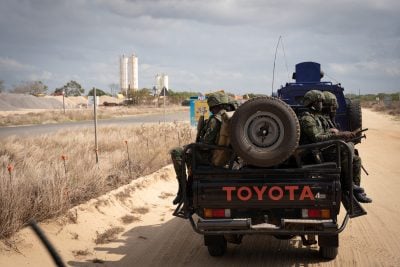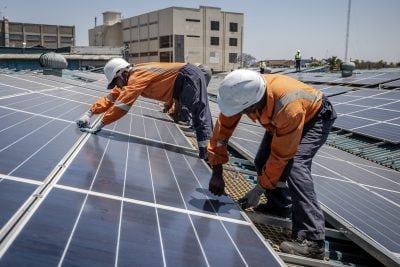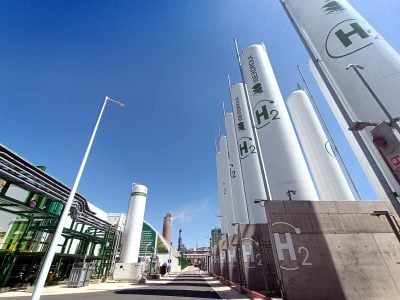The big news in the African and global mining sectors is the ongoing recovery in the price of mining commodities.
This generates more income and employment for mining firms and commodity exporting countries, and also has profound implications for planned and postponed projects. What began as a rise in demand for coking coal and a modest improvement in the outlook for the commodity hungry Chinese economy has broadened out into a more optimistic view of the entire African mining industry’s prospects.
The recovery has now extended to copper. Prices have risen from $4,300 a tonne in January 2016 to $5,934 on 15th January this year. Recovering Chinese demand is in large part responsible.
China, which accounts for 45% of global copper consumption, imported a record 16.96m tonnes of copper concentrate in 2016, up 28% on the previous year, plus 4.95m tonnes of refined copper, a 2.9% rise on the 2015 figure.
Coking coal prices experienced a shaky time in December and January. The price of one Australian benchmark fell 33% from its $308.80 a tonne peak in November by 15th January.
However, it is generally forecast that coking coal prices will average a lot more this year than the 2016 average of $143 a tonne. China imported 88.9m tonnes of iron ore in December, and at $80 a tonne, iron ore prices in January were double the level of those in January 2016.
As a result, Arcelor Mittal is expected to expand iron ore production in Liberia after two years of being forced to lay off workers. It has been reported in the Mano River state that the firm may open up production at a second mine.
US demand set to rise
Apart from China, the electoral victory of Donald Trump as president of the United States has also contributed to the recovery in commodity prices. He has drawn up plans for a $500bn infrastructural programme to create jobs and boost growth in the world’s biggest economy.
This will increase demand for copper, iron ore and many other metals. All this should be welcome news for African commodity exporters but there is one caveat. The currencies of commodity producers tend to strengthen when the prices of their key exports rise, so the value of their exports in domestic currency may not increase.
Production increases in Mozambique
Even in the midst of the downturn, Brazilian mining colossus Vale has remained committed to Mozambique, funding rail investment and increasing production at its Moatize mine, where output is being ramped up to 22m tonnes a year. It is also on the verge of completing the sale of stakes in its Mozambican assets to Mitsui that was first agreed in 2014.
Vale Moçambique has lost money over the past two years, including $212m in the first half of 2016, so the sale price has been renegotiated. The losses have been the result of a combination of low prices and high transport costs.
The latter, however, are falling, with the total mining and transport costs of a tonne of coal delivered to Nacala falling from $168 to $103 during the course of 2016. Last September, chairman Renato Torres, forecast that the Nacala Integrated Logistics Corridor (CLN), which provides rail services to the port, would transport 9m tonnes in 2016, 14m tonnes this year and 22m tonnes in 2018.
Mitsui will pay at least $255m for a 14.25% stake in the mine, with up to $195m more depending on project performance. It will also pay $348m and provide a $165m loan for a 35% stake in CLN.
Vale expects the deal to release $2.7bn to invest in the mine, railway and port terminal, which collectively require investment of $4.4bn. Vale CEO Murilo Ferreira said: “We have concluded the reworking of these terms at a moment when the market for coal is beginning to gain some momentum.”
Also in Mozambique, Jindal Steel & Power is to resume production of 3.5m tonnes a year at its Chirodzi mine because of the rise in coking coal prices. Fellow Indian firm Coal India had given up one coal concession in the country but is now keen to take another, providing that it secures assurances from the government on coal grades and can identify a coking coal concession close to existing rail infrastructure.
Intrigue and allegations in Guinea
However, low prices and the lack of transport infrastructure are not the only obstacles to mine development. For example, the world’s biggest undeveloped iron ore reserve, Simandou in Guinea, is still many years away from development after a long period of political intrigue and corruption allegations.
In October, Anglo-Australian firm Rio Tinto agreed to sell its concession over part of the reserve to Aluminium Corporation of China for up to $1.3bn. Rio Tinto previously held a concession over the entire deposit but half of it was taken by former Guinean dictator Lansana Conté and given to BSG Resources, which is mainly owned by Israeli billionaire Beny Steinmetz.
The latter was briefly put under house arrest in Israel in December on suspicion of bribing government officials in Guinea. Steinmetz has argued that allegations against him were part of Rio Tinto’s efforts to win back the rights. In November, Rio Tinto’s sacking of two senior executives was linked to allegations of irregular payments to Guinean officials.
Neil Ford
Want to continue reading? Subscribe today.
You've read all your free articles for this month! Subscribe now to enjoy full access to our content.
Digital Monthly
£8.00 / month
Receive full unlimited access to our articles, opinions, podcasts and more.
Digital Yearly
£70.00 / year
Our best value offer - save £26 and gain access to all of our digital content for an entire year!
 Sign in with Google
Sign in with Google 


